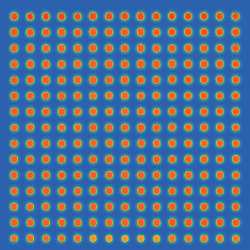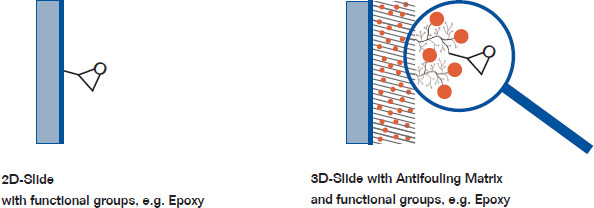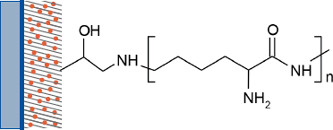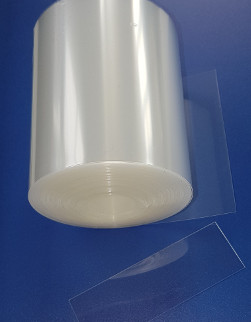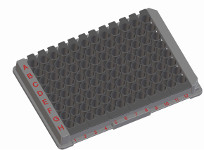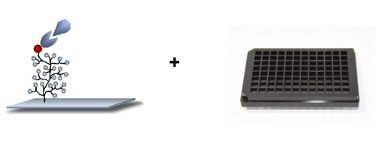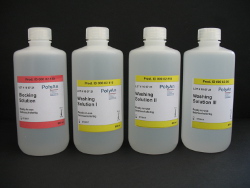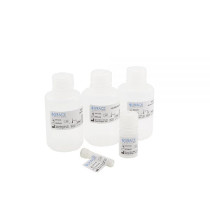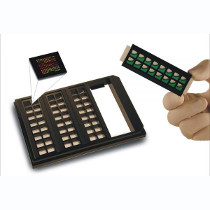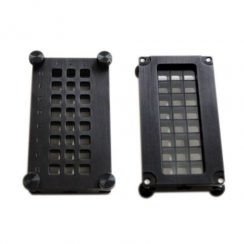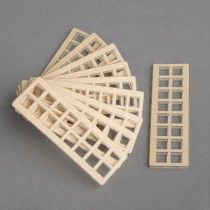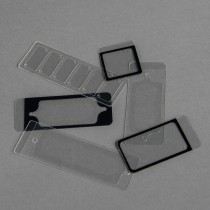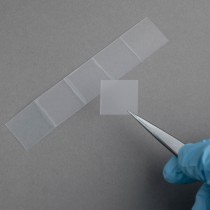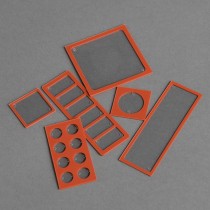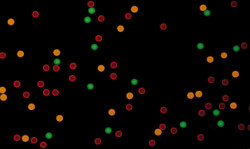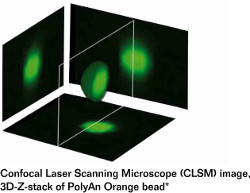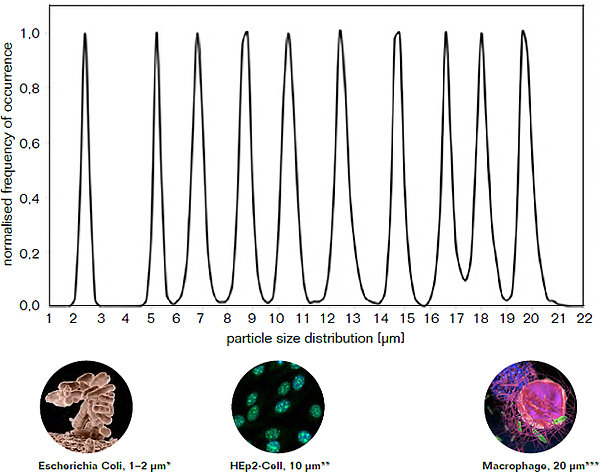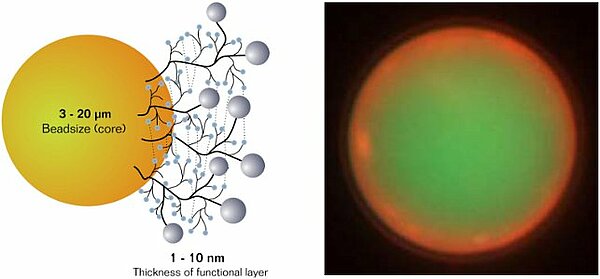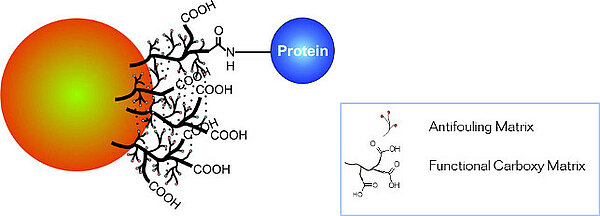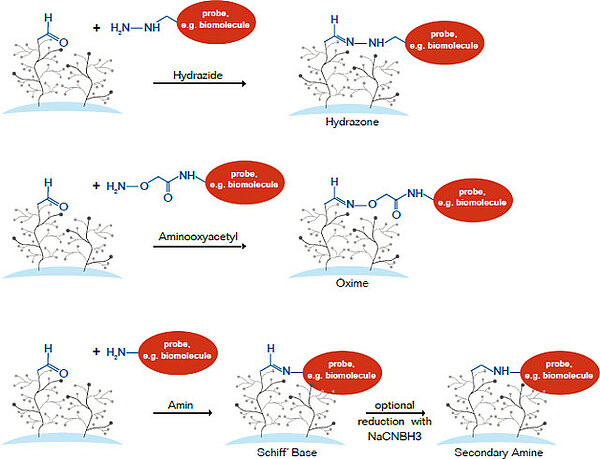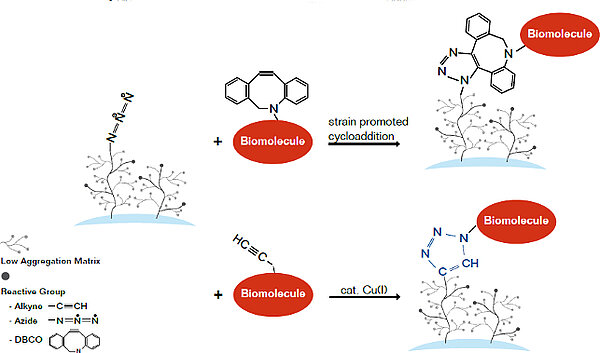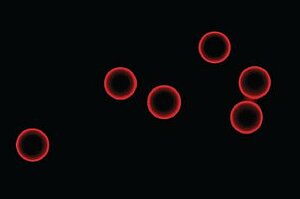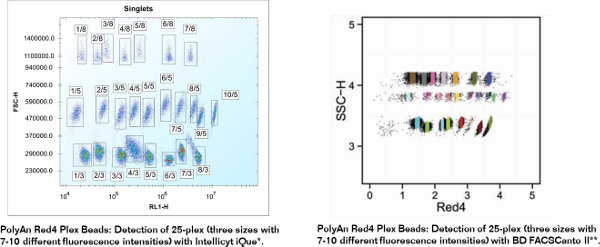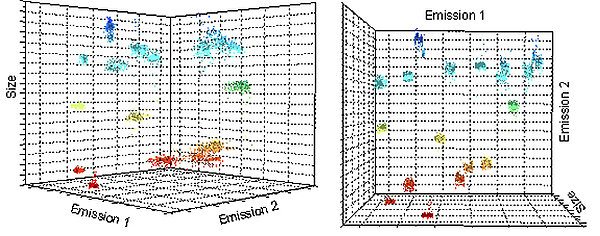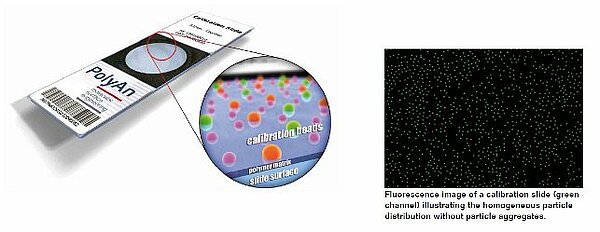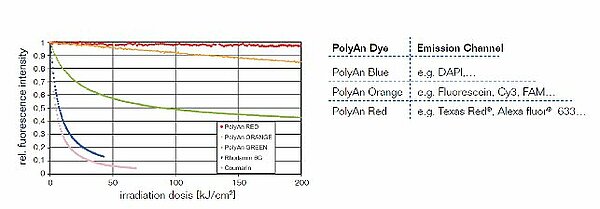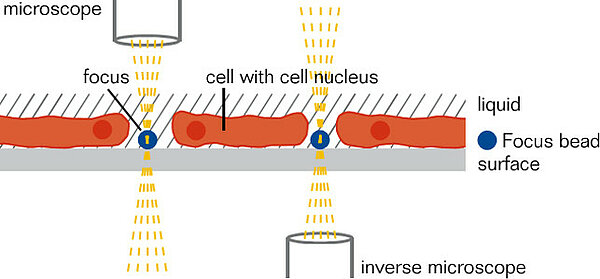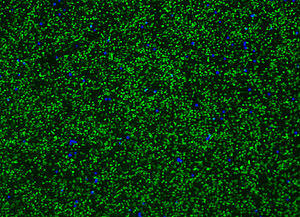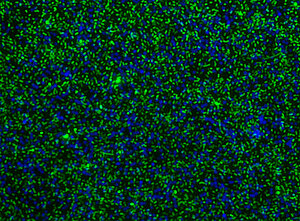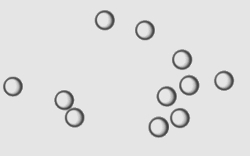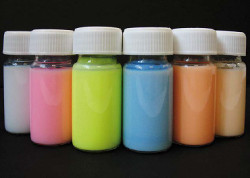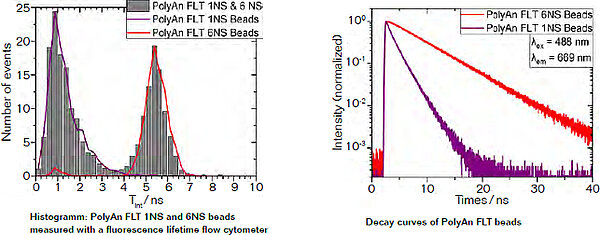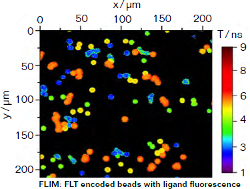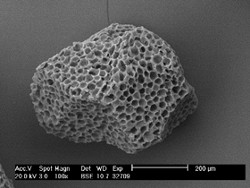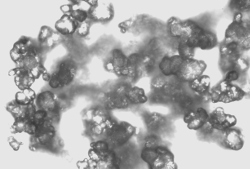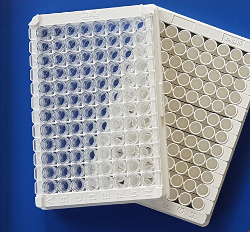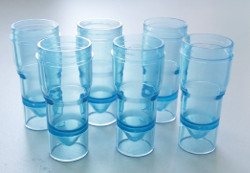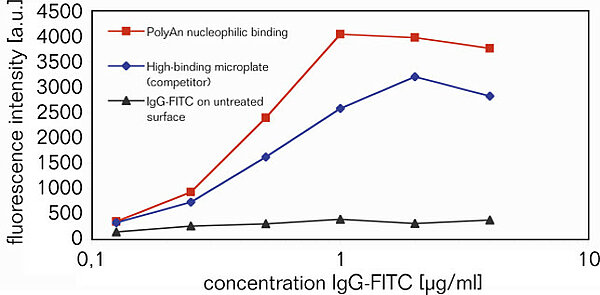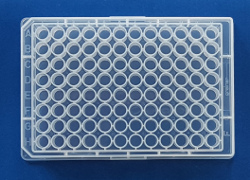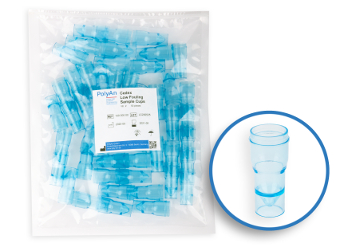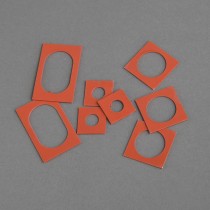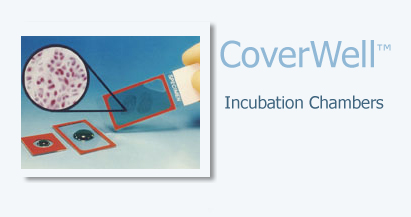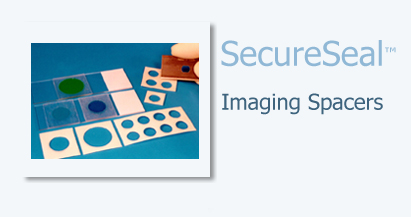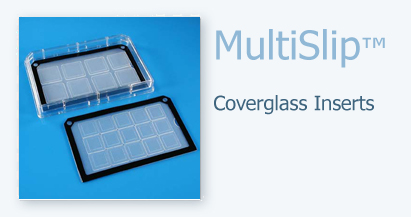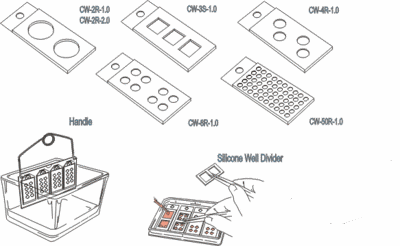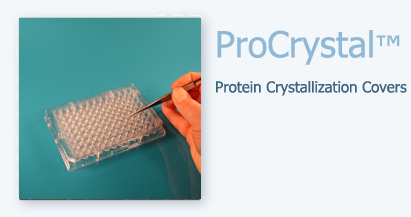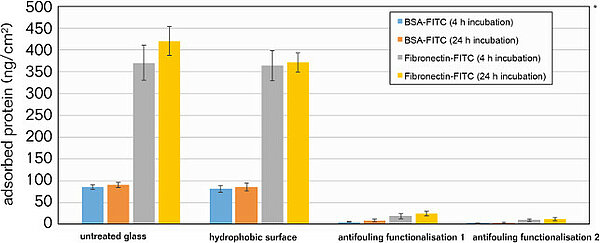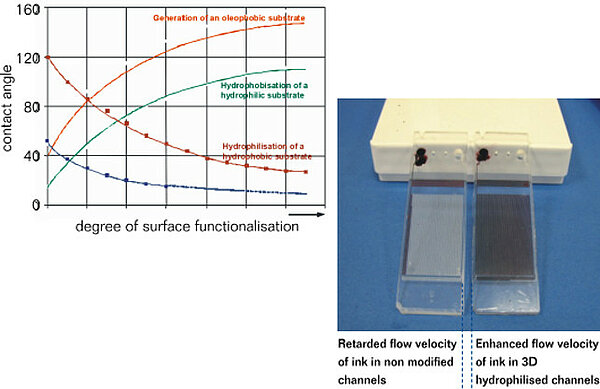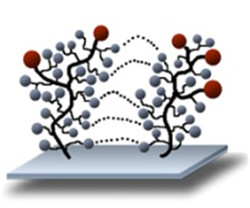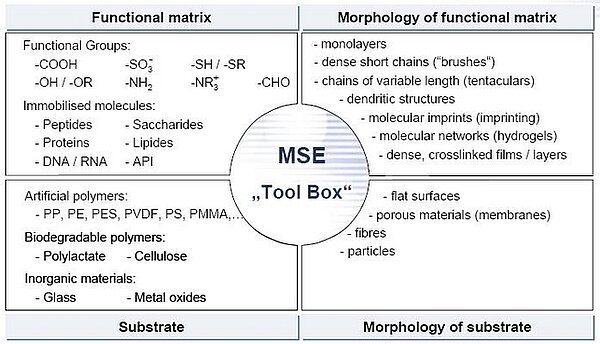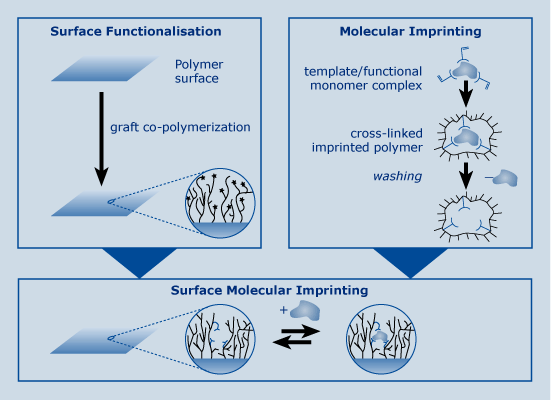Microarray Slides for glycan (carbohydrate) applications
Glycan microarrays are presentations of multiple glycans or glycoconjugates printed on a slide for screening with glycan-binding proteins, e.g. lectins, antibodies, bacteria, and viruses. Glycans are usually derivatized with functional groups and can be immobilzed for example on PolyAn’s 2D-Epoxy, 3D-Epoxy and 3D-NHS functionalized glass slides or onto PolyAn’s functionalized 96-well plates.
All of PolyAn’s reactive surfaces are completely transparent. They are characterised by a low lot-to-lot variation that is specified and monitored by using contact angle measurements as well as qualitative test methods.
More hydrophobic surfaces may result in reduced spot diameter, depending on the spotting buffer composition. Results may vary based on buffers, sample preparation, spotting and scanning instruments.
Please note, that in order to facilitate handling of the glass slides PolyAn also offers a range of useful accessories and reagents.
Selected Publications
Shoib S. Siddiqui, Chirag Dhar, Venkatasubramaniam Sundaramurthy, Aniruddha Sasmal, Hai Yu, Esther Bandala-Sanchez, Miaomiao Li, Xiaoxiao Zhang, Xi Chen, Leonard C. Harrison, Ding Xu, Ajit Varki, 2021, Sialoglycan recognition is a common connection linking acidosis, zinc, and HMGB1 in sepsis, PNAS 118 (10), e2018090118. doi: 10.1073/pnas.2018090118.
Yang Ji, Aniruddha Sasmal, Wanqing Li, Lisa Oh, Saurabh Srivastava, Audra A. Hargett, Brian R. Wasik,Hai Yu, Sandra Diaz, Biswa Choudhury, Colin R. Parrish, Darón I. Freedberg, Lee-Ping Wang,Ajit Varki, Xi Chen, 2021, Reversible O Acetyl Migration within the Sialic Acid Side Chain and Its Influence on Protein Recognition, ACS Chem. Biol, doi: 10.1021/acschembio.0c00998.
Chethan D. Shanthamurthy, Shani Leviatan Ben-Arye, Nanjundaswamy Vijendra Kumar, Sharon Yehuda,Ron Amon, Robert J. Woods, Vered Padler-Karavani, Raghavendra Kikkeri, 2021, Heparan Sulfate Mimetics Differentially Affect Homologous Chemokines and Attenuate Cancer Development, J. Med. Chem. 64: 3367-3380. doi: 10.1021/acs.jmedchem.0c01800.
Kevin O. Saunders, Norbert Pardi, Robert Parks, Sampa Santra, Zekun Mu, Laura Sutherland, Richard Scearce, Maggie Barr, Amanda Eaton, Giovanna Hernandez, Derrick Goodman, Michael J. Hogan, Istvan Tombacz, David N. Gordon, R. Wes Rountree, Yunfei Wang, Mark G. Lewis, Theodore C. Pierson, Chris Barbosa, Ying Tam, Xiaoying Shen, Guido Ferrari, Georgia D. Tomaras, David C. Montefiori, Drew Weissman, Barton F. Haynes, 2021, Lipid nanoparticle encapsulated nucleoside-modified mRNA vaccines elicit polyfunctional HIV-1 antibodies comparable to proteins in nonhuman primates. npj Vaccines 6, 50. doi: 10.1038/s41541-021-00307-6.
Tal Noy-Porat, Adva Mechaly, Yinon Levy, Efi Makdasi, Ron Alcalay, David Gur, Moshe Aftalion, Reut Falach, Shani Leviatan Ben-Arye, Shirley Lazar, Ayelet Zauberman, Eyal Epstein, Theodor Chitlaru, Shay Weiss, Hagit Achdout, Jonathan D. Edgeworth, Raghavendra Kikkeri, Hai Yu, Xi Chen, Shmuel Yitzhaki, Shmuel C. Shapira, Vered Padler-Karavani, Ohad Mazor, Ronit Rosenfeld, 2021, Therapeutic antibodies, targeting the SARS-CoV-2spike N-terminal domain, protect lethally infected K18-hACE2 mice, iScience 24 (5), 102479. doi: 10.1016/j.isci.2021.102479.
Sudeshna Saha, Alison Coady, Aniruddha Sasmal, Kunio Kawanishi, Biswa Choudhury, Hai Yu, Ricardo U. Sorensen, , Jaime Inostroza, Ian C. Schoenhofen, Xi Chen, Anja Münster-Kühnel, Chihiro Sato, Ken Kitajima, Sanjay Ram, Victor Nizet, Ajit Varki, 2021, Exploring the Impact of Ketodeoxynonulosonic Acid in Host-Pathogen Interactions Using Uptake and Surface Display by Nontypeable Haemophilus influenza, mBio 12:e03226-20. doi: 10.1128/mBio.03226-20.
Naazneen Khan, Aniruddha Sasmal, Zahra Khedri, Patrick Secrest, Andrea Verhagen, Saurabh Srivastava, Niss, Xi Chen, Hai Yu, Travis Beddoe, Adrienne W. Paton, James C. Paton, Ajit Varki, 2021, Rapid evolution of bacterial AB5 toxin B subunits independent of A subunits: sialic acid binding preferences correlate with host range and toxicity, bioRxiv. doi: 10.1101/2021.05.28.446168.
Fangping Cai, Wei-Hung Chen, Weimin Wu, Julia A. Jones, Misook Choe, Neelakshi Gohain, Xiaoying Shen, Celia LaBranche, Amanda Eaton, Laura Sutherland, Esther M. Lee, Giovanna E. Hernandez, Nelson R. Wu, Richard Scearce, Michael S. Seaman, M. Anthony Moody, Sampa Santra, Kevin Wiehe, Georgia D. Tomaras, Kshitij Wagh, Bette Korber, Mattia Bonsignori, David C. Montefiori, Barton F. Haynes, Nataliade Val, M. Gordon Joyce, Kevin O. Saunders, 2021, Structural and genetic convergence of HIV-1 neutralizing antibodies in vaccinated non-human primates. PLoS Pathog 17(6): e1009624. doi: 10.1371/journal.ppat.1009624.
Aniruddha Sasmal, Naazneen Khan, Zahra Khedri, Benjamin P.Kellman, Saurabh Srivastava, Andrea Verhagen, Hai Yu, Anders Bech Bruntse, Sandra Diaz, Nissi Varki, Travis Beddoe, Adrienne W.Paton, James C.Paton, Xi Chen, Nathan E. Lewis, Ajit Varki, 2021, Sialoglycan microarray encoding reveals differential sialoglycan binding of phylogenetically-related bacterial AB5 toxin B subunits, bioRxiv. doi: 10.1101/2021.05.28.446191.
Ankita Malik, Fridolin Steinbeis, Maria Antonietta Carillo, Peter H. Seeberger, Bernd Lepenies, Daniel Varón Silva, 2020, Immunological Evaluation of Synthetic Glycosylphosphatidylinositol Glycoconjugates as Vaccine Candidates against Malaria, ACS Chem Biol 15, 171-178. doi: 10.1021/acschembio.9b00739.
Jeffrey R. Schneidera, Xiaoying Shen, Chiara Orlandik, Tinashe Nyanheteh, Sheetal Sawantf, Ann M. Cariasb, Archer D. Smith IV, Neil L. Kelleherl, Ronald S. Veazeyo, George K. Lewisk, Georgia D. Tomaras, Thomas J. Hope, 2020, A MUC16 IgG Binding Activity Selects for a Restricted Subset of IgG Enriched for Certain Simian Immunodeficiency Virus Epitope Specificities, Journal of Virology 94 (5). doi: 10.1128/JVI.01246-19.
Salam Bashir, Leopold K. Fezeu, Shani Leviatan Ben-Arye, Sharon Yehuda, Eliran Moshe Reuven, Fabien Szabo de Edelenyi, Imen Fellah-Hebia, Thierry Le Tourneau, Berthe Marie Imbert-Marcille, Emmanuel B. Drouet, Mathilde Touvier, Jean-Christian Roussel, Hai Yu, Xi Chen, Serge Hercberg, Emanuele Cozzi, Jean-Paul Soulillou, Pilar Galan, Vered Padler-Karavani, 2020, Association between Neu5Gc carbohydrate and serum antibodies against it provides the molecular link to cancer: French NutriNet-Santé study, BMC Medicine 18:262. doi: 10.1186/s12916-020-01721-8.
Qifeng Han, Julia A. Jones, Nathan I. Nicely, Rachel K. Reed, Xiaoying Shen, Katayoun Mansouri, Mark Louder, Ashley M. Trama, S. Munir Alam, Robert J. Edwards,Mattia Bonsignori, Georgia D. Tomaras, Bette Korber, David C. Montefiori, John R. Mascola, Michael S. Seaman, Barton F. Haynes, Kevin O. Saunders, 2019, Difficult-to-neutralize global HIV-1 isolates are neutralized by antibodies targeting open envelope conformations, Nat Commun 10, 2898. doi: 10.1038/s41467-019-10899-2.
Colin Ruprechta, Andreas Geissnera, Peter H. Seeberger, Fabian Pfrenglea, 2019, Practical considerations for printing high-density glycan microarrays to study weak carbohydrate-protein interactions, Carbohydrate Research 481, 31-35. doi:10.1016/j.carres.2019.06.006.
Maria Dennis, Joshua Eudailey, Justin Pollara, Arthur S. McMillan, Kenneth D. Cronin, Pooja T. Saha, Alan D. Curtis, , Michael G. Hudgens, Genevieve G. Fouda, Guido Ferrari, Munir Alam, Koen K. A. Van Rompay, Kristina De Paris, Sallie Permar, Xiaoying Shen, 2019, Coadministration of CH31 Broadly Neutralizing Antibody Does Not Affect Development of Vaccine-Induced Anti-HIV-1 Envelope Antibody Responses in Infant Rhesus Macaques, Journal of Virology 93 (5). doi: 10.1128/JVI.01783-18.
Chethan D. Shanthamurthy, Prashant Jain, Sharon Yehuda, João T. Monteiro, Shani Leviatan Ben-Arye, Balamurugan Subramani, Bernd Lepenies, Vered Padler-Karavani, Raghavendra Kikkeri, 2018, Scientific Reports 8:6603, ABO Antigens Active Tri- and Disaccharides Microarray to Evaluate C-type Lectin Receptor Binding Preferences, Scientific Reports 8:6603. doi:10.1038/s41598-018-24333-y.
Torben Schiffner, Jesper Pallesen, Rebecca A. Russell, Jonathan Dodd, Natalia de Val, Celia C. LaBranche, David Montefiori, Georgia D. Tomaras, Xiaoying Shen, Scarlett L. Harris, Amin E. Moghaddam, Oleksandr Kalyuzhniy, Rogier W. Sanders, Laura E. McCoy, John P. Moore, Andrew B. Ward, Quentin J. Sattentau, 2018, Structural and immunologic correlates of chemically stabilized HIV-1 envelope glycoproteins, PLoS Pathog 14(5): e1006986. doi: 10.1371/journal.ppat.1006986.
Madhuri Gade, Catherine Alex, Shani Leviatan Ben-Arye, João T. Monteiro, Sharon Yehuda, Bernd Lepenies, Vered Padler-Karavani, Raghavendra Kikkeri, 2018, Microarray Analysis of Oligosaccharide-Mediated Multivalent Carbohydrate–Protein Interactions and Their Heterogeneity, ChemBioChem 19, 1170. doi: 10.1002/cbic.201800037.
Yingxia Wen, Hung V. Trinh, Christine E. Linton, Chiara Tani, Nathalie Norais, DeeAnn Martinez-Guzman, Priyanka Ramesh, Yide Sun, Frank Situ, Selen Karaca-Griffin, Christopher Hamlin, Sayali Onkar, Sai Tian, Susan Hilt, Padma Malyala, Rushit Lodaya, Ning Li, Gillis Otten, Giuseppe Palladino, Kristian Friedrich, Yukti Aggarwal, Celia LaBranche, Ryan Duffy, Xiaoying Shen, Georgia D. Tomaras, David C. Montefiori, William Fulp, Raphael Gottardo, Brian Burke, Jeffrey B. Ulmer, Susan Zolla-Pazner, Hua-Xin Liao, Barton F. Haynes, Nelson L. Michael, Jerome H. Kim, Mangala Rao, Robert J. O’Connell, Andrea Carfi, Susan W. Barnett, 2018, Generation and characterization of a bivalent protein boost for future clinical trials: HIV-1 subtypes CR01_AE and B gp120 antigens with a potent adjuvant, PLoS ONE 13(4): e0194266. doi: 10.1371/journal.pone.0194266.
Shani Leviatan Ben-Arye, Hai Yu, Xi Chen, Vered Padler-Karavani, 2017, Profiling Anti-Neu5Gc IgG in Human Sera with a Sialoglycan Microarray Assay, J. Vis. Exp. (125), e56094. doi:10.3791/56094.
Felix Broecker, Peter H. Seeberger, 2016, Synthetic Glycan Microarrays, Small Molecule Microarrays, 227–240. doi:10.1007/978-1-4939-6584-7_15.
Sebastian Götze, Anika Reinhardt, Andreas Geissner, Nahid Azzouz, Yu-Hsuan Tsai, Reka Kurucz, Daniel Varón Silva, Peter H Seeberger, 2015, Investigation of the protective properties of glycosylphosphatidylinositol-based vaccine candidates in a Toxoplasma gondii mouse challenge model, Glycobiology 25:9, 984–991, doi: 10.1093/glycob/cwv040.

